Plate colors: possible options and selection features
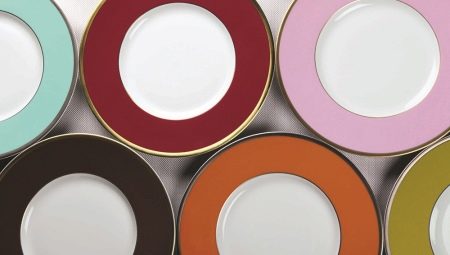
A lot of studies have been carried out that have proven the direct effect of the surrounding color palette on a person's mood and well-being. Nutritionists are of the same opinion about the effect of different colors and shades on a person's appetite. So, resorting to different shades, you can dull or, conversely, whet your appetite.
With the help of various colors, you can regulate your appetite and control your weight. This factor is used by many manufacturers when choosing a color for a logo and packaging, as well as for an advertising campaign.
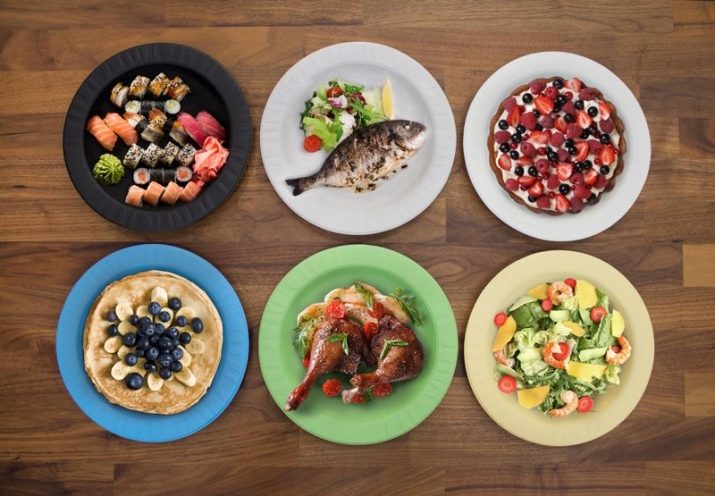
Popular light shades
- Turquoise... Turquoise is associated with a feeling of happiness and carefree, therefore it stimulates the appetite. For example, turquoise dessert plates are in great demand. It is difficult to deny yourself a beautiful dessert served on such a plate.
- White. This color is especially common and one of the most dangerous for those who want to lose weight or are afraid of gaining excess weight. This is due to the fact that any dish looks contrasting on a white background, which makes it very beautiful, and I want to try it as soon as possible.
- Peach. It is pleasant to look at the dishes served on such utensils. The color is warm and delicate, therefore it increases the appetite. These plates should be purchased for a child with a poor appetite.
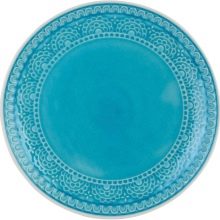
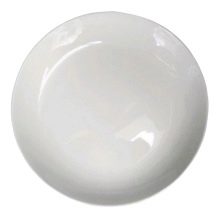

Dark cymbal options
As a rule, the variety of dark shades negatively affects a person's appetite. Therefore, they try to avoid such flowers in restaurants, but during diets they are very popular. But do not forget that different tones have their own specific effect.
- Black... Such dishes are capable of suppressing the feeling of hunger, which negatively affects human health.If this color fits perfectly into the realm of fashion, then it is best to avoid it when setting the table. However, black is often used in interior decoration to add style to a room without suppressing thoughts of food.
- Gray. This color destroys all thoughts of food. Dishes in such dishes, no matter how beautiful they are, look faded and unattractive.
- Blue. All shades of blue evoke a sense of calm, and in this state, a person is not inclined to feel hungry. On the contrary, he wants to rest, and most likely he will refuse to eat. Blue is recommended for those who want to lose weight and constantly monitor the amount of calories consumed.
- Woody. Dishes with an imitation of a natural pattern look original, and their effect on appetite is close to zero, since brown colors predominate in woody patterns.
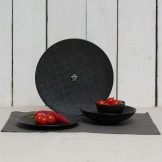
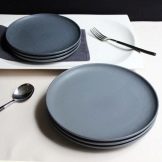
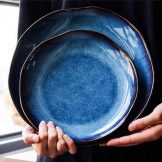
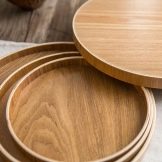
Bright colors and their features
It used to be difficult to find colored tableware, but now it is very popular and is often used both at home and in the restaurant business. Multi-colored plates have different effects on the human body, consider the main types.
- Red can cause an increase in blood pressure and heart rate, as well as increase appetite. This is used by many restaurateurs, adding red elements to the design of the restaurant, thereby increasing the demand for their dishes. However, the color red irritates the nervous system, causing aggression and anxiety. Therefore, after eating, a person may feel dissatisfaction.
- Green... This color is considered neutral, and its effect on appetite can vary depending on the selected shade. For example, green mixed with cool blues should dampen hunger and help you stay on your diet. But the warm shades of green and yellow will whet your appetite and, perhaps, you will be tempted to eat something else.
- Orange. This color can cheer you up and make your meal more enjoyable. It is believed that orange, with its warmth, encourages soulful conversations and relaxes the nervous system, so a meal can last for several hours. It also has a positive effect on brain function. Orange color - ideal for a feast.
- Yellow. This is the color of happiness and joy, it can be seen everywhere. Yellow has a positive effect on appetite, which is why yellow and orange plates are recommended for children with poor appetite.
- Pink... Pink plates, especially delicate shades, are recommended for those who do not deny themselves the pleasure of eating. This color can stimulate the production of pancreatic juice and it will be difficult for you to resist eating.
- Blue. This color belongs to neutral tones that do not affect appetite. The blue plates can be used to serve any kind of food.
- Purple. It is not easy to find dishes in these shades. This is due to the fact that there are not so many products of this color in our food, and not everyone likes them. Therefore, food on purple plates does not make everyone appetite. She looks strange and unusual.
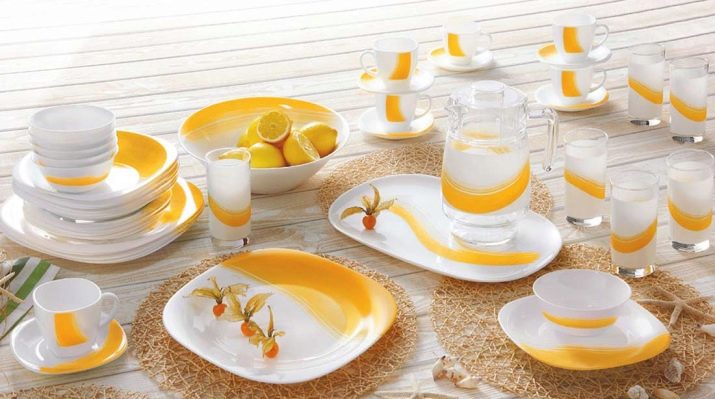
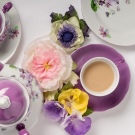
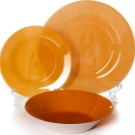
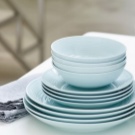
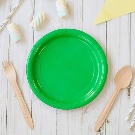
How to choose a scale?
When choosing a color palette for your dishes, first of all, you should consider what effect it should indicate on your appetite - to dull it or increase it.
If you want to get rid of extra pounds, then it is better to purchase options for cold shades. But to improve appetite, bright and warm colors, as well as classic white, are ideal.
The color of the dishes depends on what they are made of. Glassware has no color, but it can be decorated with different colored patterns. Glass looks beautiful on any table, and food looks more appetizing in contrast to glass. However, glassware has a neutral effect on hunger. Porcelain or ceramic sets can be painted in any color.
It is important to consider the design and color scheme of the interior and kitchen set. If the design of the room is rather complex and has many bright details in the design, it is better to buy plain, calm dishes. But for a minimalist interior, you can use both plain and discreet plates and bright sets.
You can independently come up with a design for future dishes. For information on how to beautifully decorate a plate with hand-painted, see the next video.








